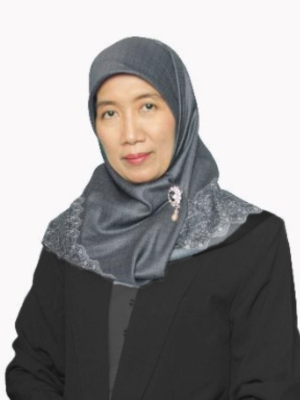Trafficking in Person Among Singkawang Women
Downloads
Trafficking in persons, involving modern slavery, sexual exploitation, forced labor, and organ trafficking, is a global
issue in Indonesia, particularly in border areas like Sumatra and Kalimantan. Mail-order brides, promised marriages,
are exploited, despite local village officials' disregard. This research aims to identify and examine the trafficking in
persons still occurs between the women of Singkawang, West Kalimantan, and Taiwanese men. This qualitative
research uses a descriptive method to study mail-order bride trafficking in Singkawang, West Kalimantan, a region
bordering Sarawak-East Malaysia. The study involves observation, focus group discussions, and data analysis,
identifying themes and addressing issues such as poverty, low education, and deeply rooted local culture. Mail-order
brides in Singkawang, are a growing global phenomenon where women migrate for better livelihoods. Victims often
face sexual and labor exploitation in their home countries. Stakeholders must monitor marriage brokers to address
this issue.
Barnett, L. (2011). Trafficking in persons. Library of Parliament.
Clark, M. A. (2003). Trafficking in persons: An issue of human security. Journal of Human Development, 4(2), 247–263.
Esther, J. (2016). Handling of Crime Victims of Trafficking in Persons in the District North Kalimantan Nunukan. South East Asia Journal of Contemporary Business, Economics and Law, 9(4), 12–23.
Ford, M., & Lyons, L. (2012). Labor migration, trafficking and border controls. A Companion to Border Studies, 438–454.
IOM. (2021). Guideline on Trafficking in Persons Handling. International Organization for Migration (IOM) Indonesia.
Jackson, S. H. (2002). To honor and obey: Trafficking in mail-order brides. Geo. Wash. L. Rev., 70, 475.
Kemenlu. (2019, September 19). Kementerian Luar Negeri Kembali Pulangkan WNI yang Menjadi Korban Pengantin Pesanan ke Indonesia dari Republik Rakyat Tiongkok (RRT).
Kinasih, S. E., Devy, S. R., Koesbardiati, T., & Romadhona, M. K. (2024). Human migration, infectious diseases, plague, global health crisis - historical evidence. Cogent Arts & Humanities, 11(1). https://doi.org/10.1080/23311983.2024.2392399
Mahalingam, R., & Sidhu, J. S. (2021). Inside the crime of sex trafficking in Sabah, Malaysia. Journal of Human Trafficking, 7(3), 308–324.
Meng, E. (1994). Mail-order brides: gilded prostitution and the legal response. U. Mich. JL Reform, 28, 197.
Missbach, A., & Sinanu, F. (2014). People smuggling in Indonesia: Dependency, exploitation and other vulnerabilities 1. In Human Trafficking in Asia (pp. 165–181). Routledge.
Naibaho, N. (2011). Human Trafficking in Indonesia: Law Enforcement Problems. Indon. L. Rev., 1, 83.
Nguyen, T. (2014). Marriage migration” significant factor trafficking in Vietnam.
Prakoso, L. Y. (2019). Defense strategy at sea handling of Transnational Organized Crime (TNOC) in Nunukan Indonesia’s national sea border. IOP Conference Series: Earth and Environmental Science, 339(1), 12043.
Ramadani, R. Y., Tjitrawati, A. T., Romadhona, M. K., Narwati, E., & Kinasih, S. E. (2023). The Rights to Health for All: Is Indonesia Fully Committed to Protected Refugees and Asylum Seekers? Jurnal Hubungan Luar Negeri, 8(2), 55–80.
Romadhona, M. K., Oktafenanda, R. D., & Kinasih, S. E. (2024). Assessing Corporate Social Responsibility From the Perspective of the Local Community. ASEAN Journal of Community Engagement, 8(1), 59–72.
Sandel, T. L., & Lie Owens, S. (2024). ‘Marriage is like Gambling’: Interpreting and Narrating Stories of Hakka Chinese Indonesians’ Marriage Migration. Asian Studies Review, 1–20.
Scarpa, S. (2008). Trafficking in human beings: modern slavery. Oxford University Press, USA.
Sembada, R. T., & Heryadi, D. (2020). Potential Threats of Transnational Crimes in The Indonesia-Malaysia Border Area. The First International Conference on Political, Social and Humanities Sciences (ICPSH 2020), 9.
Sikki, N., & Puspita, M. (2024). Human Trafficking in the Border Area of Indonesia (A Case Study in West and East Kalimantan). International Seminar on Border Region (INTSOB 2023), 218–236.
Sikwan, A., Triastuti, M. R. H., Putranti, B. D., & Casmiwati, D. (2004). Tragedi perdagangan amoi Singkawang. Kerja sama Ford Foundation dengan Pusat Studi Kependudukan dan Kebijakan ….
Stickle, W., Hickman, S., & White, C. (2019). Human trafficking: A comprehensive exploration of modern day slavery. Sage Publications.
Sulaksono, E. (2018). The Patterns of Human Trafficking of Indonesian Migrant Workers: Case Study of the Riau Islands and Johor Border Crossing. Masyarakat, Jurnal Sosiologi, 23(2), 3.
Tanggok, M. I. (2017). Agama dan kebudayaan orang Hakka di Singkawang: Memuja leluhur dan menanti datangnya rezeki. Buku Kompas.
The Counter Trafficking Data Collaborative. (2024). Data-driven Solutions Against Trafficking and Exploitation.
Wahyudi, I., Ida, R., Koesbandiarti, T., Kinasih, S. E., Murti, D. B., & Romadhona, M. K. (2023). Literasi Tentang Penyakit Menular Bagi Calon Pekerja Migran Indonesia di Luar Negeri Melalui Mekanisme OPP. Journal of Urban Sociology, 1(1), 40–49.
Wilk, A. (2017). Oppression or Opportunity: The Selling of Mail-Order Brides.
Winterdyk, J., Perrin, B., & Reichel, P. (2011). Human trafficking: Exploring the international nature, concerns, and complexities. CRC Press.
Yenny, A. S., Yuliastini, A., & Setiawati, R. (2020). The Handling Of Human Trafficking With Mail Order Bride Mode In West Kalimantan. International Journal of Law Reconstruction, 4(2), 69–80.
Yokota, S. (2022). Marrying out of Indonesia and Global Householding: Chinese Indonesian Women from West Kalimantan across Taiwan and Transnational Chinese Community. In When East Asia Meets Southeast Asia: Presence And Connectedness In Transformation Revisited (p. 231). World Scientific.
Yoteni, A. A. (2021). Upaya Pemerintah Indonesia Dalam Menangani Kasus Perdagangan Orang: Studi Kasus Pengantin Pesanan (Mail-Order Brides) Indonesia–China. Papua Journal of Diplomacy and International Relations, 1(1), 1–14.
Copyright (c) 2025 Biokultur

This work is licensed under a Creative Commons Attribution-NonCommercial-ShareAlike 4.0 International License.
1. Copyright of this journal is possession of Editorial Board and Journal Manager, by the knowledge of the author, while the moral right of the publication belongs to the author.
2. The formal legal aspect of journal publication accessibility refers to a Creative Commons Attribution-NonCommercial-ShareAlike 4.0 International License (CC BY-NC-SA).
3. All publications (printed/electronic) is open access for educational purposes, research, and library. Other than the aims mentioned above, the editorial board is not responsible for copyright violation.









